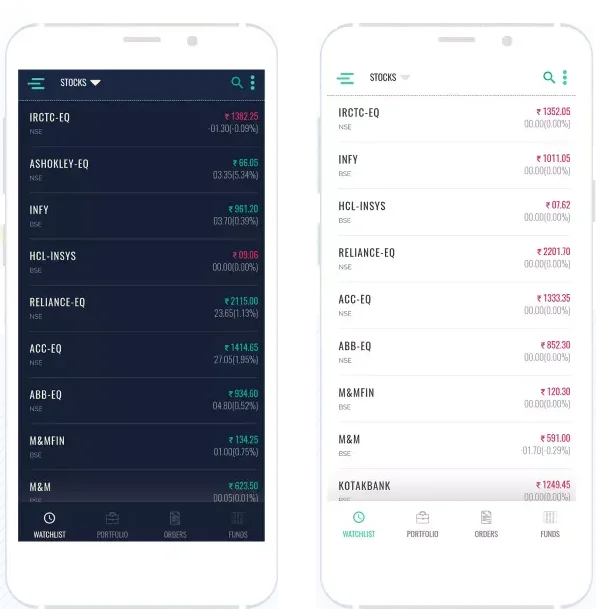Ratio Analysis (Part-5)

Valuation ratios or market ratios
Valuation ratios
Valuation ratios use stock price and the elements of the balance sheet or profit and loss account or cash flows to understand whether a company is valued at a premium or discount i.e. if a company is overvalued or undervalued. It helps in decision making. How will one know if a company is overvalued or undervalued? One has to either compare the ratios with the intrinsic value or the perceived value of the company or its peer company’s valuation. The idea is to find out if the current market price reflects the performance of the company. Let us look at a few of them.
- Price to earnings (PE) ratio- the relationship between the stock price and the earnings per share (EPS) is examined to understand the value that a market is assigning to the company’s earnings.
Price to earnings (PE) ratio= current market price/earnings per share (EPS)
Earnings per share of two types:
- Basic Earnings per share (EPS) = net profit- preferred divided/weighted average of equity shares outstanding
- Diluted earnings per share (DEPS) net profit- preferred divided/weighted average of equity shares outstanding + future securities that are convertible into equity.
Both of these are available in the financial statements
| Mar-21 | |
| Current market price | 40 |
| EPS | 1.14 |
| PE ratio | 35.09 |
| Industry leader | 69.61 |
Interpretation: The PE ratio is quite low compared to the industry leader. However, the industry leader has a better financial position. This company is struggling with its working capital and probably the market is not willing to give it a higher value.
- Price to book value- is a ratio that measures how much value the market is assigning to the book value of the company. Book value is nothing but all assets put together minus all the liabilities. What remains is the Net worth (Equity capital +reserves). Net worth divided by the number of outstanding shares is book value per share.
Book value per share = (Equity capital + Reserves)/ equity shares outstanding
| Mar-19 | Mar-20 | Mar-21 | |
| Equity capital (a) | 22 | 22 | 20 |
| Reserves (b) | 67 | 67 | 64 |
| Shareholder’s fund (a)+(b) | 89 | 89 | 84 |
| No of shares outstanding (c) | 2 | 2 | 2 |
| Book value (a + b)/(c) | 44.54 | 44.54 | 41.94 |
| Industry leader | 44.33 | 49.56 | 57.60 |
Price to book value (P/BV) ratio= current market price/book value
| Mar-21 | |
| Current market price | 40 |
| Book value | 41.94 |
| Price to book value | 0.95 |
| Industry leader | 10.42 |
Interpretation: The Price to book ratio indicates whether a company is undervalued or overvalued. The higher the ratio higher is the value that the market is ready to give and vice-versa. A lower than 1 ratio indicates the stock is undervalued. This ratio has a very limited scope in terms of manufacturing companies. Its applicability is more relevant in banking and financing companies.
- Price to sales ratio (P/S)- examines how much value per share does a market give for every rupee of sale it makes. The higher the ratio better it is.
Price to sales ratio (P/S) = current market price/total sales of the company.
| Mar-21 | |
| Current market price | 40 |
| Sales | 228.00 |
| Price to sales | 0.18 |
| Industry leader | 10.26 |
Interpretation: In our example, the market is not giving much value for the sales as compared to the industry leader. It is undervalued. However, being undervalued does not mean it’s a good buy. One has to understand the overall financial health to take a call.
- Price to cash flow (P/CF)- is one of the most important ratios as it discounts the ability of the company to generate cash from the business. This ratio is preferred as it is difficult to manipulate cash flow.
Price to cash flow (P/CF) = current market price/ operating cash flow per share.
| Mar-21 | |
| Current market price (a) | 40 |
| Operating cash flow (b) | 25.00 |
| No of shares outstanding (c) | 1.99 |
| operating cash flow per share | 12.56 |
| Price to cash flow | 3.18 |
| Industry leader | 35.41 |
Interpretation: In this example, the market is ascribing a very low price to cash flow to the company as compared to the industry leader. It is undervalued but needs further investigations before it can be a potential buy.
| Profit & Loss | |||||
| Figures in Rs. Crores | |||||
| Mar-17 | Mar-18 | Mar-19 | Mar-20 | Mar-21 | |
| Net Sales (A) | 265 | 297 | 271 | 264 | 228 |
| Sales Growth % | -3.4% | 12.1% | -8.9% | -2.4% | -13.7% |
| Total expenses (B) | 244 | 281 | 251 | 247 | 215 |
| ~~Material Cost (a) | 175 | 197 | 175 | 165 | 153 |
| ~~Material Cost % | 66% | 66% | 65% | 62% | 67% |
| ~~Operating cost (b) | 11 | 18 | 18 | 18 | 14 |
| ~~Manufacturing Cost % | 4% | 6% | 7% | 7% | 6% |
| ~~Employee Cost (c) | 27 | 30 | 27 | 26 | 23 |
| ~~Employee Cost % | 10% | 10% | 10% | 10% | 10% |
| ~~Cost of goods sold (a+b+c) | 212 | 245 | 220 | 210 | 189 |
| ~~Other Costs | 32 | 36 | 31 | 37 | 25 |
| ~~Other Cost % | 12% | 12% | 12% | 14% | 11% |
| Operating Profit (A)-(B) | 21 | 16 | 20 | 17 | 13 |
| OPM % to sales | 8% | 5% | 7% | 6% | 6% |
| Other Income | 2 | 3 | 0 | 1 | 1 |
| Interest | 10 | 10 | 7 | 7 | 5 |
| Depreciation | 5 | 5 | 5 | 5 | 4 |
| Profit before tax | 8 | 4 | 8 | 6 | 5 |
| Tax | 2 | 1 | 1 | 3 | 3 |
| Tax % | 19% | 34% | 8% | 42% | 52% |
| Net Profit | 7 | 3 | 8 | 4 | 2 |
| EPS in Rs | 3.03 | 1.14 | 3.49 | 1.71 | 1.14 |
| Dividend Pay-out | 0 | 0 | 0 | 0 | 0 |
| Dividend Pay-out % | 0% | 0% | 0% | 0% | 0% |
| Balance Sheet | |||||
| Figures in Rs. Crores | |||||
| Mar-17 | Mar-18 | Mar-19 | Mar-20 | Mar-21 | |
| Liabilities | |||||
| Share Capital (A) | 22 | 22 | 22 | 22 | 20 |
| ~~Equity Capital | 22 | 22 | 22 | 22 | 20 |
| ~~~Outstanding number of shares | 2 | 2 | 2 | 2 | 2 |
| Reserves (B) | 107 | 110 | 67 | 67 | 64 |
| Borrowings (C) | 61 | 70 | 62 | 58 | 64 |
| Current Liabilities (D) | 66 | 74 | 52 | 46 | 44 |
| ~~Trade Payables | 48 | 55 | 34 | 31 | 26 |
| ~~Advance from Customers | 2 | 0 | 0 | 0 | 1 |
| ~~Other liability items | 16 | 18 | 18 | 16 | 17 |
| Total Liabilities (A+B+C+D) | 257 | 275 | 203 | 193 | 192 |
| Assets | |||||
| Fixed assets | |||||
| ~~Land | 11 | 11 | 8 | 8 | 16 |
| ~~Building | 30 | 32 | 20 | 20 | 20 |
| ~~Plant Machinery | 44 | 55 | 44 | 46 | 47 |
| ~~ Equipment | 1 | 1 | 1 | 1 | 1 |
| ~~Computers | 1 | 1 | 1 | 1 | 1 |
| ~~Furniture n fittings | 3 | 4 | 2 | 2 | 2 |
| ~~Vehicles | 2 | 2 | 2 | 2 | 2 |
| ~~Intangible Assets | 6 | 6 | 6 | 6 | 6 |
| ~~Other fixed assets | 1 | 1 | 2 | 1 | 1 |
| Gross Block (A) | 99 | 115 | 85 | 88 | 96 |
| Less: Accumulated Depreciation (B) | 44 | 49 | 40 | 45 | 49 |
| CWIP © | 1 | 0 | 0 | 0 | 0 |
| Net Block (A+B-C) | 56 | 66 | 45 | 43 | 48 |
| Investments (D) | 1 | 1 | 0 | 0 | 0 |
| Current Assets(E) | 199 | 209 | 158 | 150 | 144 |
| Inventories | 75 | 81 | 52 | 50 | 46 |
| Trade receivables | 80 | 87 | 80 | 73 | 71 |
| Cash Equivalents | 8 | 13 | 7 | 1 | 10 |
| Loans n Advances | 16 | 9 | 11 | 13 | 11 |
| Other asset items | 21 | 19 | 7 | 13 | 6 |
| Total Assets (A+B+C+D+E) | 257 | 275 | 203 | 193 | 192 |
| Cash Flows | |||||
| Figures in Rs. Crores | |||||
| Cash from Operating Activity (A) | 0 | 18 | 4 | 10 | 25 |
| Profit from operations | 21.69 | 17.16 | 20.02 | 17.8 | 14.09 |
| Receivables | -18.8 | -6.92 | -15.42 | 7.14 | 1.63 |
| Inventory | -15.49 | -6.43 | 0.13 | 2.08 | 4.47 |
| Payables | 18.86 | 7.09 | 0.54 | -6.3 | -4.88 |
| Loans Advances | -0.46 | 0.58 | -3.96 | 0.82 | 7.03 |
| Other WC items | -4.29 | 8.85 | 3.55 | -9.99 | 5.56 |
| Working capital changes | -20.17 | 3.17 | -15.16 | -6.26 | 13.81 |
| Interest paid | 0 | 0 | 0 | 0 | 0 |
| Direct taxes | -1.84 | -2.41 | -0.45 | -1.76 | -3.15 |
| Advance tax | 0 | 0 | 0 | 0 | 0 |
| Other operating items | 0 | 0 | 0 | 0 | 0 |
| Cash from Investing Activity (B) | -3 | -14 | -3 | 0 | -9 |
| Fixed assets purchased | -4.25 | -15.58 | -3.46 | -3.56 | -8.83 |
| Fixed assets sold | 0.06 | 0.94 | 0.04 | 0.15 | 0.08 |
| Capital WIP | 0 | 0 | -0.33 | 0.23 | 0.03 |
| Investments purchased | -0.25 | 0 | 0 | -0.15 | 0 |
| Investments sold | 0 | 0.01 | 0.69 | 0 | 0 |
| Interest received | 1.32 | 1.74 | 0.2 | 0.21 | 0.16 |
| Other investing items | 0.56 | -0.78 | -0.07 | 3.06 | -0.87 |
| Cash from Financing Activity (C) | 10 | -1 | -2 | -14 | -7 |
| Proceeds from shares | 0 | 0 | 0 | 0 | 0 |
| Proceeds from borrowings | 0 | 8.93 | 7.98 | 0.38 | 25.93 |
| Repayment of borrowings | 0 | 0 | -2.99 | -8.17 | -19.97 |
| Interest paid fin | -2.3 | -9.99 | -6.93 | -6.69 | -4.78 |
| Other financing items | 12.17 | 0 | 0 | 0 | -8.14 |
| Net Cash Flow | 7 | 3 | 0 | -5 | 8 |
Limitations of ratio analysis
- Does not consider inflation-Ratios are calculated on historical numbers and the current changes in price are not taken into consideration.
- Qualitative aspect ignored-ratios takes into account only numbers other qualitative aspects are not considered.
- Accounting policies- Accounting policies differ from company to company and therefore peer comparison cannot be done.
- Operational changes-operational changes over some time make comparison with past years irrelevant.
- There are no standard definitions for ratios
- Ratios are only tools to identify problems and by itself does not resolve anything
Frequently Asked Questions (FAQs)
What is ratio analysis?
Ratio analysis is a tool to understand the financial statements to compare its present performance with its past performance and also with peers.
What are the benefits of ratio analysis?
Familiarity with the ratios helps in a quick understanding of the performance of the company. It helps in understanding the performance trends of various aspects of the company. It also helps in identifying areas of weakness. Forecasting is possible with ratio analysis. It also, analysis how efficiently the management is conducting the business.
What is the broad classification of ratios?
Following is the broad classification of ratios:
- Growth
- Operating performance
- Efficiency
- Financial risk
- Valuations
- Cash flow ratios
What are the limitations of ratio analysis?
The broad limitations of ratio analysis are as follows
- It is based on historical numbers and therefore ignores the impact of inflation
- Stresses on quantitative aspects than qualitative aspects
- There are no standardisation rules for ratio it is open to interpretation and modification
- Ratios help in identifying problems and do not resolve the problem


How Would You Rate This Chapter?
Next
Comments (0)